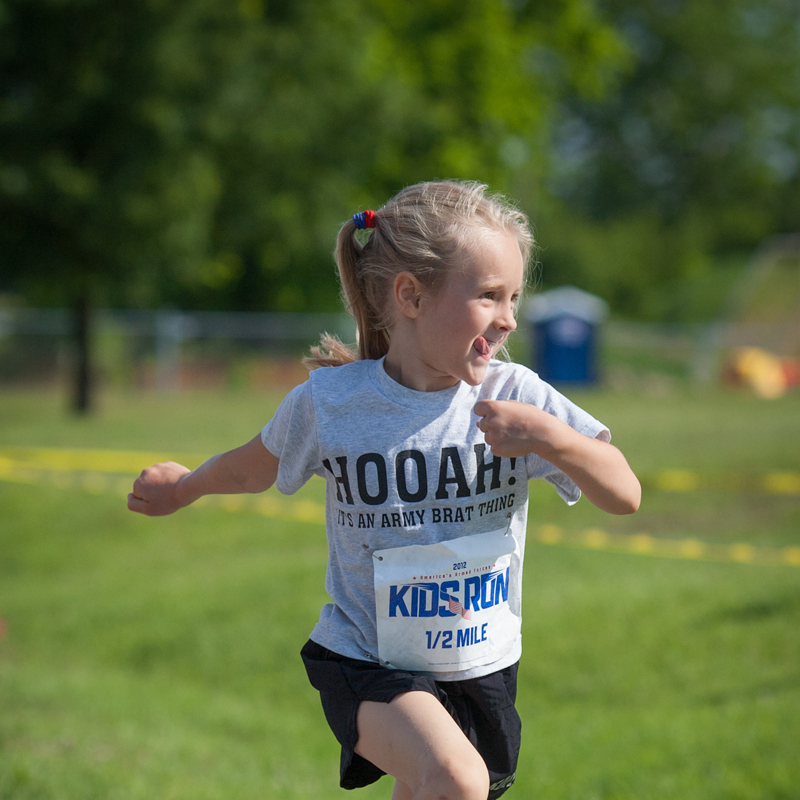- Study Says Most Parents Don’t Use Car Seats In Ride Share Vehicles Like Uber
- This 12-Year-Old Boy Is A Sophomore Aerospace Engineering Major!
- Fire Safety Experts Warn Of Hand Sanitizer Danger After A Mom and Kids Escape House Fire
- Recall Alert: Peaches May Be The Cause Of Salmonella Outbreak, 68 People Ill
- Summer Vacation In The Days Of COVID: Tips To Stay Safe
- How To Safely Grocery Shop During The Coronavirus Pandemic
- Michigan Teen With Vape-Related Illness Undergoes Double Lung Transplant
- Teen Kicks Off Anti-Vaping Campaign From Hospital Bed
- Teenager Receives Life Sentence For Strangling Sister To Death Over A Wi-Fi Password
- Toddler Falls To Death From 11th Deck of Cruise Ship
Good Age for Kids to Try Distance Running


With the growing popularity of 5k and 10k races as fundraisers and awareness events, the amount of children participating in distance-running events seems to be on the rise.
It’s odd to think distance running was once thought as dangerous for young athletes. (But it was!) Yet, with the proper precautions and limits set in place, experts now agree it can be a safe recreational activity for kids.
But how young is “too young,” exactly?
The answer to this question varies by child, but there are a few factors to keep in mind. While distance running isn’t inherently dangerous for children, kids are at a greater risk of heat illness while exercising in general.
“The combination of exercise, warm environmental temperatures, and a higher metabolic rate in children causes them to produce more heat than adults,” said Thomas Pommering, the medical director of sports medicine at Nationwide Children’s Hospital, in this article. “It has been reported that children also have fewer sweat glands than adults and do not cool themselves as efficiently.”
Aerobic capacity in children is also limited to a certain degree until they hit puberty, Pommering added. Because of these differences between prepubescent and pubescent youth, maximum distance recommendations should be based on age as follows:
- Under age 9: 1.5 miles
- Ages 9 to 11: 3.2 miles
- Ages 12 to 14: 6.4 miles
- Ages 15 to 16: Half marathon (13.1 miles)
- Age 18: Marathon (26.2 miles)
(An article from Health.com seems to agree that the ideal time to ease into a 5K is the 9-to-10 age range.)
Experts also stress that weekly training distances shouldn’t exceed double the maximum competition distance. (For example, kids ages 9 to 11 should aim for no more than 6.4 miles.) Additionally, youth ages 14 and younger should run only three times each week and youth older than 15 can shoot for a max of five times per week.
In order to prevent injury, parents and coaches should make it a point to help kids follow these general guidelines:
- Stretch before and after running.
- Running shoes should be replaced at least every 500 miles.
- Mileage shouldn’t be increased by more than 10 percent each week.
- Hard days should be followed up with easy days.
- Avoid uneven running surfaces, if possible.
- Stop if running if it becomes too painful.
Above all, parents should allow kids to progress at their own pace while offering them the support they need in order to thrive — and enjoy — long-distance running. Keeping running fun and low-key can set children up for a lifelong passion.








0 comments